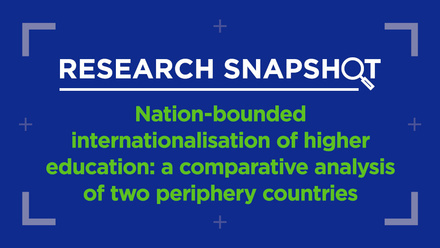European Universities: balancing excellence, exclusiveness and inclusion

With the first 17 ‘European universities’ selected by the European Commission last week, the European Education Area has moved one step forward toward becoming a reality. But will the initiative live up to the hopes and dreams of international educators, or will it buckle under the weight of its own internal tensions?
When President Macron's idea of European Universities was first picked up by the academic community, most people expected that, given its bureaucratic nature, the EU would not be able to act on it before the new Erasmus+ generation starts in 2021. But within a year, the first pilot call was published, and the first winners were just announced on June 26th. As a result of this speedy process, and despite several stakeholder workshops with universities and member states, we still don’t really know what exactly we are getting.
There are two calls during the so-called pilot phase, in which different ideas are supposed to be tested. But the final programme design for the new Erasmus generation has to be ready before the first projects are one year old. The pilot phase is thus much too short to learn anything substantial from its implementation. At the most, we can see where the demand lies. The discussion about the future shape of the programme is thus still wide open.
Excellence versus inclusion
One of the most heated debates centres around the question of excellence versus inclusion. Is this a programme for the usual suspects (ie the big research universities) or is it open for all who put forth a convincing concept for intensified cooperation? Interestingly enough, grounds for both of these interpretations can be found in Macron’s speech.
His sentence "Des universités européenes qui seront aussi des lieux d’innovation pédagogique, de recherche d’excellence” was translated into German as “Orte ... exzellenter Forschung“ (“places of excellent research”). The English translation, on the other hand, reads “drivers... of the quest for excellence”. With the pilot phase, the Commission has clearly opted for the second interpretation, which gives a real chance to all kinds of universities and different forms of excellence (for example, excellence in art education). On the other hand, there are still strong voices that consider excellent research as a sine qua non for the European Universities and thus favour certain kinds of universities.
Exclusiveness versus inclusion
Another decision was to make sure that all regions of Europe are included in the selected projects. But how inclusive can it be? It is good news that the idea of European Universities seems to be so attractive that a great many institutions and every country want to be part of it. But one of the reasons for that widespread interest is that it promises to confer a title belonging to an exclusive circle. Even before the first call, there were discussions of whether universities who put forth a good application, but not good enough to get financial support due to limited funds, could receive an official title as ‘European University’. Clearly, belonging to an exclusive club is some of the appeal.
The idea that each network would potentially receive around €60m for seven years was certainly one of the reasons for the widespread interest
This leads to a key question that has to be determined in the near future: How many European Universities can there be? Macron proposed 20, and that is the number which has dominated the debate. No official finances have been announced for this programme line for the new Erasmus programme, but the figure that circulated widely was about €1.3bn. The idea that each network would potentially receive around €60m for seven years was certainly one of the reasons for the widespread interest. And you could say that the ambition of the programme, as described in the call, matches those figures.
This year already 17 pilot projects were chosen, up from the originally six and then twelve planned, albeit with just €5m each for three years. The call this fall will potentially allow for up to another 24 projects to be selected next year. That would give us 41 projects before the ‘real’ programme starts. How many of the projects of the pilot phase will be allowed to continue? Would it be politically possible to discontinue 30 of those projects after the pilot phase to make space for new applicants for five more calls?
To this day, it is difficult to determine what differentiates a European University from a well-established strategic partnership
One thing seems very clear: we will end up with more than 20 networks and their budget will be lower than originally expected. The question is: where is the line? To this day, it is difficult to determine what differentiates a European University from a well-established strategic partnership. How much money is needed to lift such a partnership to a real new level rather than being just a little more of the same? How much of the vision and ambition of the programme are we willing to give up to include more networks? And of course, whether we end up with 20 or with 60 networks, the programme can only reach a small number of the universities in Europe. But what these networks achieve and what they represent will depend on the number and the level of financial support.






